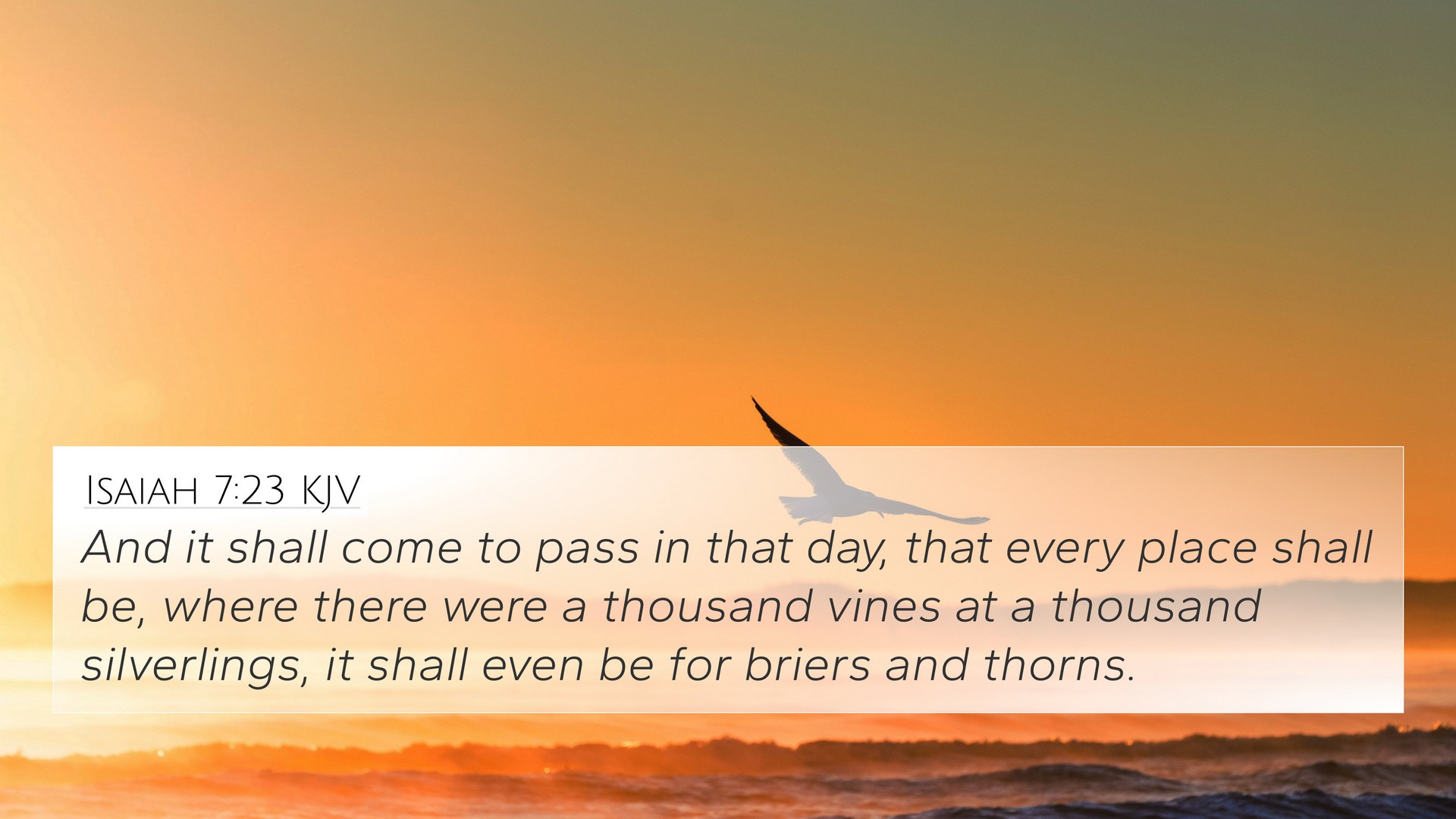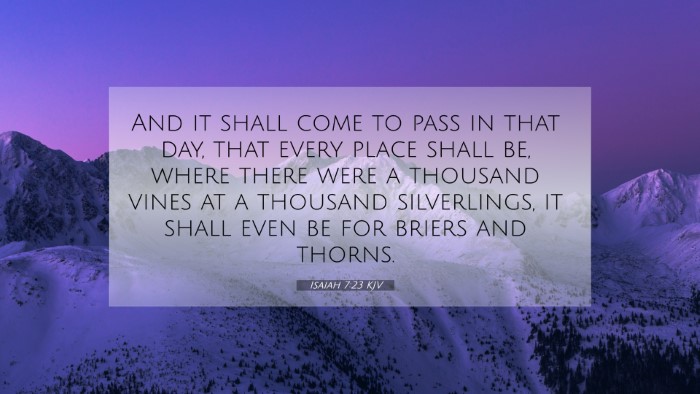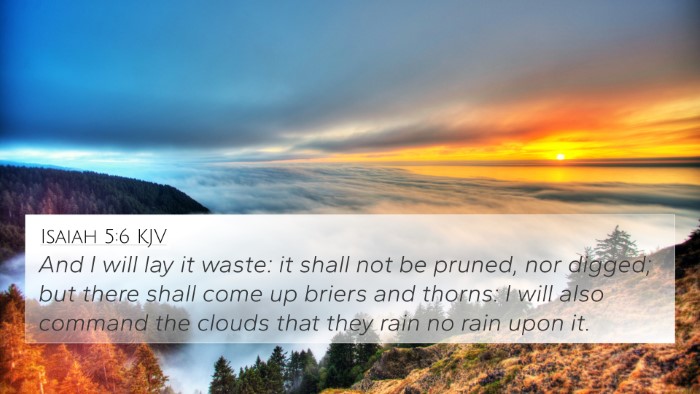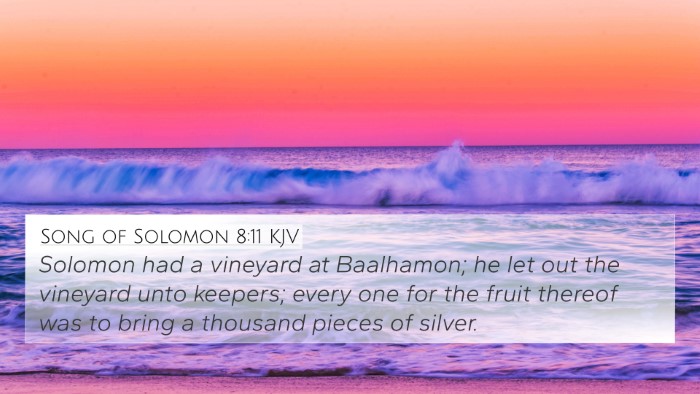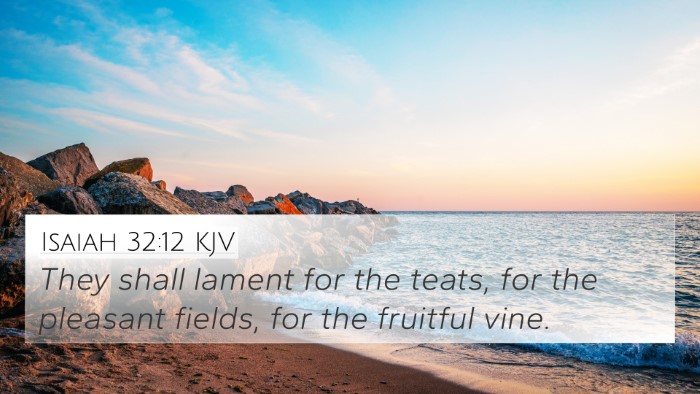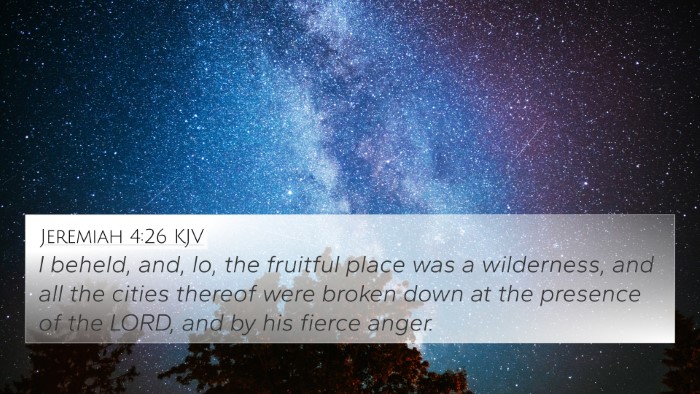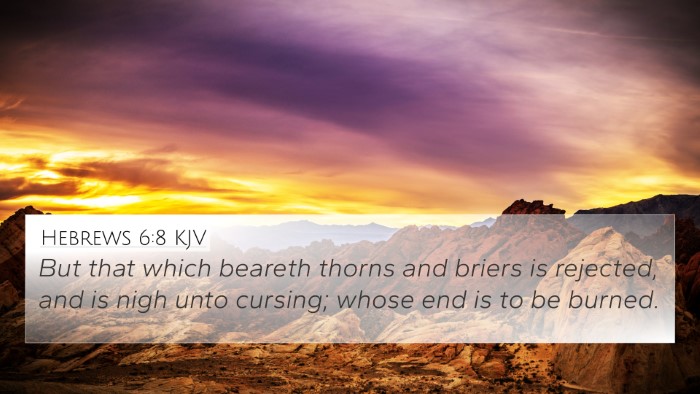Understanding Isaiah 7:23
Verse: Isaiah 7:23
Text: "And it shall come to pass in that day, that every place shall be, where there were a thousand vines at a thousand silverlings, it shall even be for briers and thorns."
Summary of Meaning
Isaiah 7:23 speaks of a future time when the land that was once prosperous will become desolate due to the impending judgment. This verse serves as a stark reminder of the consequences of disobedience to God and the inevitable decline of blessing when the covenant with Him is broken.
Interpretation and Insights
Matthew Henry's Commentary:
Henry emphasizes that the imagery of vines and silverlings signifies wealth and abundance. The desolation described signifies a punishment that will render even the most fruitful land uninhabitable. This points to the transfer of divine favor away from Israel due to their turning away from God.
Albert Barnes' Notes:
Barnes notes that this verse outlines a prophetic vision reflecting a time of scarcity that would follow a period of abundance. This transformation is attributed to the unfaithfulness of the people. The metaphor of "briers and thorns" illustrates the complete transformation of fertile lands into wastelands.
Adam Clarke's Commentary:
Clarke connects this verse to the broader theme of divine retribution. He explains that the drastic change from abundance to barrenness serves as a warning. It highlights the spiritual implications of rejecting God's ways and the natural consequence of such disobedience in both individual and national contexts.
Context and Thematic Connections
This verse is rooted within a prophetic oracle concerning the fate of Judah amidst political turmoil and moral decline. The theological tone of Isaiah warns against apostasy and the tangible results of sin, presenting a sobering view of what occurs when God's blessings are taken for granted.
Cross References
- Deuteronomy 28:38-40: Discusses curses for disobedience with imagery of failed agriculture.
- Jeremiah 5:17: Illustrates the consequences of sin with similar agricultural metaphors, emphasizing devastation.
- Hosea 10:1-2: Refers to Israel as an empty vine, indicating spoiling due to sin.
- Luke 13:6-9: The parable of the barren fig tree warning about spiritual productivity.
- Matthew 21:19: Jesus curses the unfruitful fig tree, indicating God’s expectation for fruitfulness.
- Isaiah 5:1-5: The song of the vineyard further explores themes of disobedience leading to destruction.
- Micah 7:1: Expresses sorrow over the ruined harvest, similar to the imagery in Isaiah.
Bible Verse Connections
Connecting Isaiah 7:23 with other biblical texts reveals a consistent theme of divine judgment resulting from Israel's moral failures. These connections not only highlight the agricultural metaphors used throughout Scripture but also emphasizes God's desire for His people to remain faithful and fruitful.
Tools for Cross-Referencing
For those interested in exploring the interconnections of scripture:
- Bible concordance
- Bible cross-reference guide
- Tools for Bible cross-referencing
- Comprehensive Bible cross-reference materials
- Bible reference resources
Further Study and Application
To fully appreciate the implications of Isaiah 7:23, one can engage in comparative Bible verse analysis, examining how this prophetic warning resonated in both the Old and New Testaments. By studying the roles of various Biblical figures and their relationship with God's covenant, deeper insights into the themes of faithfulness, judgment, and restoration can be discovered.
This verse serves as a critical reminder of the importance of maintaining a faithful covenant with God, as well as recognizing the gradual decay that results from turning away from divine principles. Reflecting on these lessons is vital for personal spiritual growth and communal faithfulness.
Conclusion
Isaiah 7:23 encapsulates the grave implications of spiritual unfruitfulness through the metaphor of desolate agriculture. Understanding this verse through public domain commentaries aids in a comprehensive grasp of its meaning, providing a solid basis for further meditation on the interrelated nature of Biblical text and themes.
